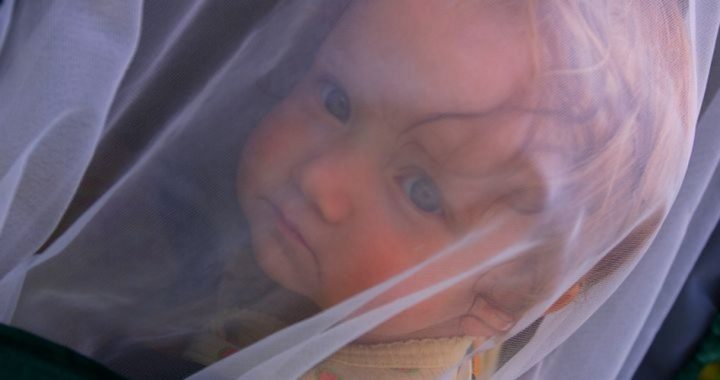
The Pew Research Center released a report last week based on information from the National Center for Health Statistics on birth rates in the United States. Data found within the report could raise concerns over both the economic and cultural ramifications of the birth rates of foreign-born mothers in the United States.
According to the report, “In 2014, about 275,000 babies were born to unauthorized-immigrant parents in the United States, accounting for about seven percent of all U.S. births, and 32 percent of all U.S. births to foreign-born mothers.”
While that figure represents a decline in the number of babies born to unauthorized immigrants in the United States, the economic impact of these children is significant, as illegal families are granted access to welfare programs through their U.S.-born children, known as “anchor babies.”
Last year, in an analysis of 2009 census data, National Review reported that 71 percent of illegal-alien-headed households with children received some sort of welfare, compared with 39 percent of native-headed households. Furthermore, children of illegals are granted access to public schools, which can cost approximately $160,000 per pupil for a K-12 public school education, based on an average yearly cost of $12,300 per student.
These 275,000 children are also granted access to healthcare. Under ObamaCare, these families are eligible for costly subsidies paid for by taxpayers who, in many cases, are not eligible for the same subsidies and therefore are faced with either exorbitant healthcare costs for their own families or stiff fines for opting out of health insurance.
Furthermore, the data also reveal that foreign-born mothers live in families that make less money than U.S.-born counterparts. Pew Research writes, “While median family income for new U.S-born moms is about $51,200 annually, this figure is $41,300 for new foreign-born moms. And while about 26% of new U.S.-born mothers live in poverty, this share rises to 31% for foreign-born new mothers.”
Pew advises, “The share of babies born to moms from Latin America has declined while the share of babies born to moms from regions such as Asia has increased.”
It’s also worth noting that when these babies become adults, they will compete for wages against the children of U.S.-born parents in a slow-growing economy weighed down by crippling regulations.
Pew reports, “While the annual number of babies born in the U.S. has fluctuated in recent years — most markedly during the Great Recession when there was a significant drop in births nationwide — the trajectory over the past four decades or so has been upward. In 2014, there were 4.00 million births in the U.S., compared with 3.74 million in 1970.”
The report continues, “This growth has been driven entirely by the increasing numbers of babies born to immigrant women. In 2014, immigrant women accounted for about 901,000 U.S. births, which marked a threefold increase from 1970 when immigrant women accounted for about 274,000 births. Meanwhile, the annual number of births to U.S.-born women dropped by 11% during that same time period, from 3.46 million in 1970 to 3.10 million in 2014.”
The International Business Times reports that by 2042, minorities will become the majority and by 2050, will make up 54 percent of the populace. By 2023, non-whites will be the majority among children.
The impact on the cultural makeup of the United States is troubling, as it remains to be seen whether these families will assimilate into the American culture. In a piece for The New American last week, Thomas Sowell wrote,
People who came here a hundred years ago usually did so in order to fit within the framework of America and become Americans. Some still do. But many come from a very different cultural background — and our own multiculturalism dogmas and grievance industry work to keep them foreign and resentful of Americans who have achieved more than they have.
Some immigrant groups seek to bring to America the very cultures whose failures led them to flee to this country. Not all individual immigrants and not all immigrant groups. But too many Americans have become so gullible that they are afraid to even get the facts about which immigrants have done well and improved America, and which have become a burden that can drag us all down.
One need not look further than California to find evidence of Sowell’s observations. At Live Oak High School in Morgan Hill, for example, American flag t-shirts were banned during Cinco de Mayo (May 5), a Mexican holiday, so as to not offend the Mexican students.
As noted by Mike Gonzalez, senior fellow at the Kathryn and Shelby Collom Davis Institute for National Security and Foreign Policy, American has drifted far from its belief in “E Pluribus Unum” (Latin for “Out of Many, One”), and has made any expectation for assimilation into American culture a taboo and politically incorrect goal:
Patriotic assimilation is the bond that allows America to be a nation of immigrants. Without it, America either ceases to be a nation, becoming instead a hodgepodge of groups — or it becomes a nation that can no longer welcome immigrants. It cannot be both a unified nation and a place that welcomes immigrants without patriotic assimilation.
Over the past few decades, however, America has drifted away from assimilating immigrants. Elites — in the government, the culture, and the academy — have led a push toward multiculturalism, which emphasizes group differences. This transformation has taken place with little input from rank-and-file Americans, who overwhelmingly support assimilation. As Ronald Reagan worried just as it was first getting underway, this tectonic shift that “divides us into minority groups” was initiated by political opportunists “to create voting blocs.”
With foreign-born mothers having more children than U.S.-born mothers, the best hope to preserve the American culture is for these families to adapt to the American culture.
Meanwhile, the data reveal that an increasing number of children are being born to unmarried parents. The latest figures show that 42 percent of U.S.-born women were unmarried when giving birth.
The Pew Research Center reports,
The share of babies born to unmarried mothers has consistently been higher for U.S.-born women than for immigrant women. However, the roughly 10-point gap between the two groups in 2014 is the largest disparity since birth data by nativity and marital status became available 30 years earlier.
Overall, 41 percent of babies born in 2014 were to unmarried women — double what it was 30 years ago. Teenagers comprise six percent of the births among unmarried U.S.-born women and two percent of foreign-born women.




